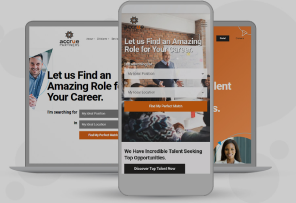Business-to-business selling is different from consumer sales in many ways. For example, instead of dealing with an individual, you may need to convince an entire committee or board.
B2B selling is complicated by the fact that buying criteria can vary wildly by industry and size of business. For example, the decision-making process of a large private school choosing fire safety equipment will be much more multi-layered and thorough than the process a small art studio owner might use to make the same purchase.
Luckily, there are several "success factors" that you can count on to reliably motivate businesses and institutions of all types and sizes in their buying decisions.
Saving Money
Trimming costs is a huge motivator for everyone from struggling entrepreneurs to giant enterprises — it's a universal B2B goal. All successful businesses work hard at controlling costs and improving profit margins, and every executive wants to be the hero who finds a way to cut expenses in their department.
If you can show them a way to spend less money without sacrificing quality, they will listen.
Saving Time
Self-employed individuals and mom-and-pop shop owners often work long hours and crave more leisure and family time. In bigger businesses, staff time is literally money — payroll is usually one of a company's biggest expenses.
If you demonstrate that your solution will reduce the amount of time required to reach a company's goal, that's an offer they simply cannot refuse.
Increasing Sales
Increasing sales is another universal motivator in B2B sales. For a small-scale entrepreneur, more sales can translate immediately into higher take-home pay.
But managers and executives are also very sales-conscious. The manager who invests in a product or service that increases sales can expect to get promoted. They can justify the expense by showing their board of directors what they have to gain from increased revenue.
If you can persuade your buyer that you can help them reach more people, create a more marketable product, or persuade their customers to buy more often, then you have their attention.
Improve Products/Services
Every business wants to create a more competitive product or service, whether it's something as simple as an improved website for their company or the newest version of some cutting-edge technology that will revolutionize its industry.
Improving products and services impacts their bottom line, with increased sales, but it also appeals to their pride and their natural desire to offer the best widgets on the market.
If you can show how your solution improves on what they already have in some way, you'll be on your way to a sale.
Making Staff Happier
This is one of the most effective and under-utilized sales tools: show buyers how happy their staff will be if they make this purchase.
Most managers understand that high job satisfaction translates directly into lower turnover, improved attendance, and higher productivity. In service businesses, the staff is essentially the product — they want the face of their company to be smiling and cheerful.
If you can demonstrate that your product can improve staff morale along with cutting costs or increasing sales, then you've got something very compelling — it's a win-win situation.
Perception of Quality and Status
Every business wants to be perceived as a successful, forward-thinking company with high standards for quality — even if they don't actually have those things yet.
Executives and entrepreneurs will sometimes invest in technology, equipment, or furnishings for no other reason than the status they gain, or the way those items make them look to others or feel about themselves.
Can your product boost your customers' image in some way, or make them appear more professional or prestigious? If so, make that clear in your presentation.
A Sense of Purpose
Executives and entrepreneurs are leaders, and for some of them, it's very important to fulfill a sense of purpose as well as achieve personal success. They may want to advance causes like diversity in employment, improving the environment, or making the world a better place in some other way.
Do your products use recycled materials? Does your supply chain employ fair trade methods? Does your company make donations to social welfare organizations?
If you can demonstrate how your solution offers improvements for society at large in addition to solving your client's problems, then you have an added value to offer in this area.
Motivation Combinations
As we’ve discussed, there are many factors that motivate B2B purchases. However, if you want to improve your business sales process, it is important to understand what motivates the business buyer. While this list is not exhaustive by any means, these seven factors are reliable motivators for most B2B buyers. Try combining them together into blended sales points that will appeal to potential buyers and convert them into loyal customers.



